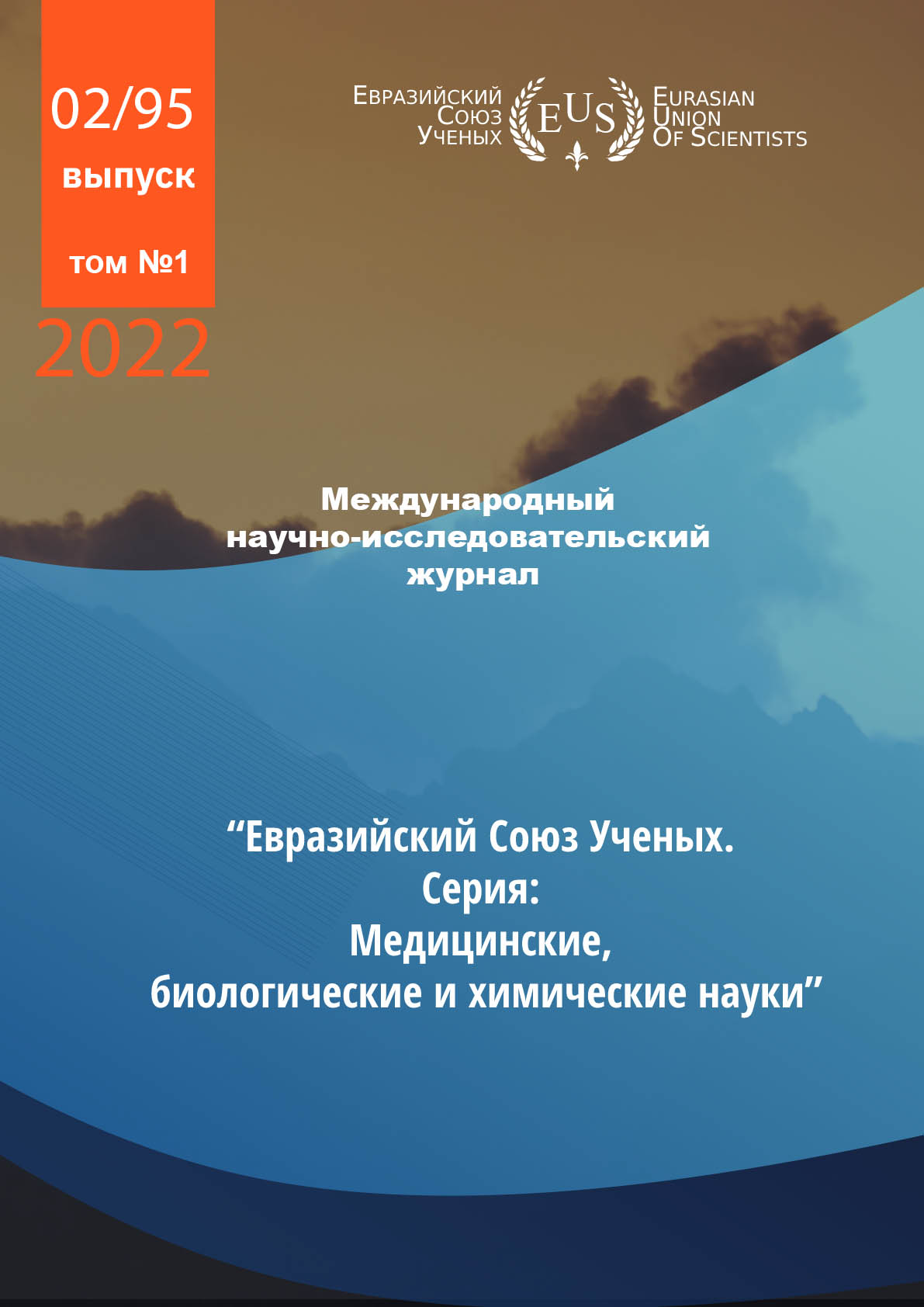FEATURES OF THE FUNCTIONAL STATE OF THE LIVER IN PREGNANT WOMEN WITH UTERINE FIBROMYOMA
Abstract
The present study is aimed at studying the features of the functional state of the liver in patients with uterine
fibromyoma. 64 women aged 35–38 years with impaired liver function and uterine fibromyoma and 20
conditionally healthy women were under observation. The study was performed on equipment: Abbott (USA),
Beckman Coulter (USA), Hitachi (Japan). The study of liver pigment function revealed an increased bilirubin
content in the main group (23,5 ± 1,0 mmol/l) in comparison with the control group (18,3 ± 1,1 mmol/l). There
was a decrease in total protein to 60,2 ± 2,4 g/l in the main group, compared with healthy women 71,4 ± 1,3 g/l.
In the protein formula of the blood serum, dysproteinemia is expressed in a decrease in albumin to and an increase
in globulin. In the course of the study, the data obtained indicate a change in liver function in uterine fibromyoma,
therefore, it is necessary to recommend special treatment aimed at restoring liver function
References
2. Leush S. S., Roshhina G. F. Aktual'nye voprosy lechenija miomy matki // Medicinskie aspekty zdorov'ja zhenshhiny. – 2011. – №2. – S. 44–46.
3. Meriakri A. V. Jepidemiologija i patogenez miomy matki // Sibirskij medicinskij zhurnal (Irkutsk). – 1998. – T. 13. №2. – S.8–13.
4. Aharoni A., Reiter A., Golan D., et al. Patterns of growth of uterine leiomyomas during pregnancy. A prospective longitudinal study. // Br J Obstet Gynaecol.
– 1988. – Vol. 95. – P.510e13.
5. Chowdhury S., Rashid M. Successful Management of Massive Obstetric Haemorrhage due to Placenta Previa/Accreta-A Case Report // Journal of Bangladesh College of Physicians and Surgeons. – 2011. – Vol. 29. №1. – P.46-48.
6. Fenn M.G., Isac M. Caesarean Myomectomy – A Versatile Procedure for Management of Fibroids at C. Section // Journal of Evolution of Medical and Dental Sciences. – 2015. – Vol. 4. №11. – P.1863–1866.
7. Jauniaux E., Khan K.S. Caesarean myomectomy: Victor Bonney reports the first case in 1913 // BJOG. – 2014. – Vol. 121. №2. – P.193.
8. Rosati P., Exacoustos C., Mancuso S. Longitudinal evaluation of uterine myoma growth during pregnancy. A sonographic study // J Ultrasound Med – 1992. – Vol. 11. – P.511e15.
9. Vergani P., Ghidini A., Strobelt N., et al. Do uterine leiomyomas influence pregnancy outcome? // Am J Perinatol. – 1994. – Vol. 11. – P.356e8. 14.
10. Zaima A., Ash A. Fibroid in pregnancy: characteristics, complications, and management // Postgraduate medical journal. – 2011. – Vol. 87 (1034). – P.819–828.
11. Aaroni A., Rejter A., Golan D. i dr. Zakonomernosti rosta lejomiom matki vo vremja beremennosti. Perspektivnoe longitjudnoe issledovanie. // Br J Akusherskij ginekolog. – 1988. – T. 95. – S.510e13.
12. Choudhuri S., Rashid M. Uspeshnoe lechenie massivnogo akusherskogo krovotechenija iz-za predlezhanija placenty /Akkreta - Klinicheskij sluchaj // Zhurnal Bangladeshskogo kolledzha vrachej i hirurgov. – 2011. – T. 29. №1. – S.46-48.
13. Fenn M.G., Isak M. Kesareva sechenija Miomjektomija – Universal'naja procedura dlja lechenija miomy pri kesarevom sechenii // Zhurnal jevoljucii medicinskih i stomatologicheskih nauk. – 2015. – T. 4. №11. – S.1863–1866.
14. Zhonio Je., Han K.S. Kesareva sechenija miomjektomija: Viktor Bonni soobshhaet o pervom sluchae v 1913 godu // BJOG. – 2014. – T. 121. №2. – S.193.
15. Rozati P., Jekakustos S., Mankuzo S. Prodol'naja ocenka rosta miomy matki vo vremja beremennosti. Ul'trazvukovoe issledovanie // J Ultrasound Med – 1992. – T. 11. – S.511e15.
16. Vergani P., Gidini A., Strobelt N. i dr. Vlijajut li lejomiomy matki na ishod beremennosti? // Ja Dzhej Perinatol. – 1994. – T. 11. – S.356e8. 14. Zajma A., Jesh A. Mioma vo vremja beremennosti: osobennosti, oslozhnenija i lechenie // Medicinskij zhurnal dlja aspirantov. – 2011. – T. 87 (1034). – S.819–828.
CC BY-ND
A work licensed in this way allows the following:
1. The freedom to use and perform the work: The licensee must be allowed to make any use, private or public, of the work.
2. The freedom to study the work and apply the information: The licensee must be allowed to examine the work and to use the knowledge gained from the work in any way. The license may not, for example, restrict "reverse engineering."
2. The freedom to redistribute copies: Copies may be sold, swapped or given away for free, in the same form as the original.







